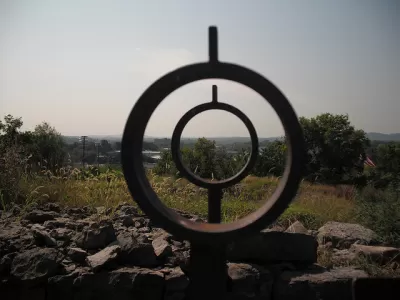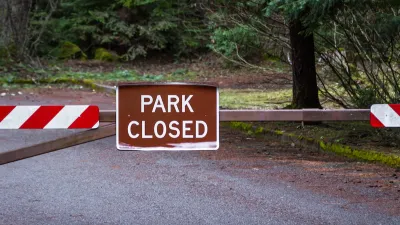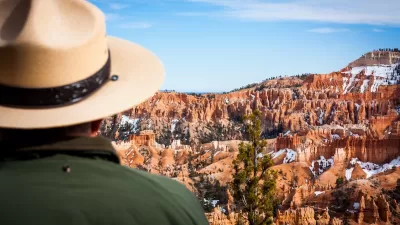Threats facing major U.S. cultural sites today include development, drilling, and the federal government.

The Cultural Landscape Foundation has issued its annual "Landslide" list of the nation's precious sites most threatened by "confiscation, development, energy and resource extraction, and other incompatible uses."
The 2017 edition, "Open Season on Open Space," includes 12 sites across the country, plus one listing that encompasses all areas potentially impacted by the ongoing federal review of national park designations. The Architect's Newspaper explains:
This year’s thirteen sites were organized based on five themes: “monetization of open space,” in which parks come under pressure to generate profit; “resource extraction,” which is under particular attack by Secretary of the Interior Ryan Zinke, who proposed relaxing management rules for six monuments, exposing them to mining and logging; “park equity,” charging to use parks or converting them to sport and cultural venues; “detrimental effects of shadow,” where the surrounding development is built up to the point where the park no longer receives adequate light; and “the devaluation of cultural lifeways,” in which ancestral lands and other sites of cultural significance are threatened.
TCLF also maintains an online database of notable cultural landscapes throughout the U.S.
FULL STORY: The Cultural Landscape Foundation announces threatened landscapes of 2017

Planetizen Federal Action Tracker
A weekly monitor of how Trump’s orders and actions are impacting planners and planning in America.

San Francisco's School District Spent $105M To Build Affordable Housing for Teachers — And That's Just the Beginning
SFUSD joins a growing list of school districts using their land holdings to address housing affordability challenges faced by their own employees.

The Tiny, Adorable $7,000 Car Turning Japan Onto EVs
The single seat Mibot charges from a regular plug as quickly as an iPad, and is about half the price of an average EV.

Seattle's Plan for Adopting Driverless Cars
Equity, safety, accessibility and affordability are front of mind as the city prepares for robotaxis and other autonomous vehicles.

As Trump Phases Out FEMA, Is It Time to Flee the Floodplains?
With less federal funding available for disaster relief efforts, the need to relocate at-risk communities is more urgent than ever.

With Protected Lanes, 460% More People Commute by Bike
For those needing more ammo, more data proving what we already knew is here.
Urban Design for Planners 1: Software Tools
This six-course series explores essential urban design concepts using open source software and equips planners with the tools they need to participate fully in the urban design process.
Planning for Universal Design
Learn the tools for implementing Universal Design in planning regulations.
Smith Gee Studio
City of Charlotte
City of Camden Redevelopment Agency
City of Astoria
Transportation Research & Education Center (TREC) at Portland State University
US High Speed Rail Association
City of Camden Redevelopment Agency
Municipality of Princeton (NJ)





























